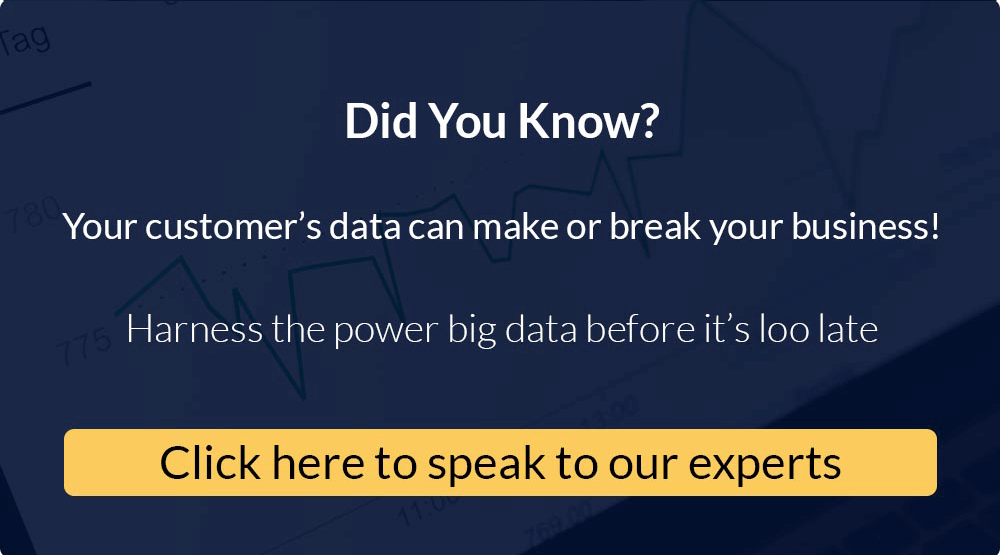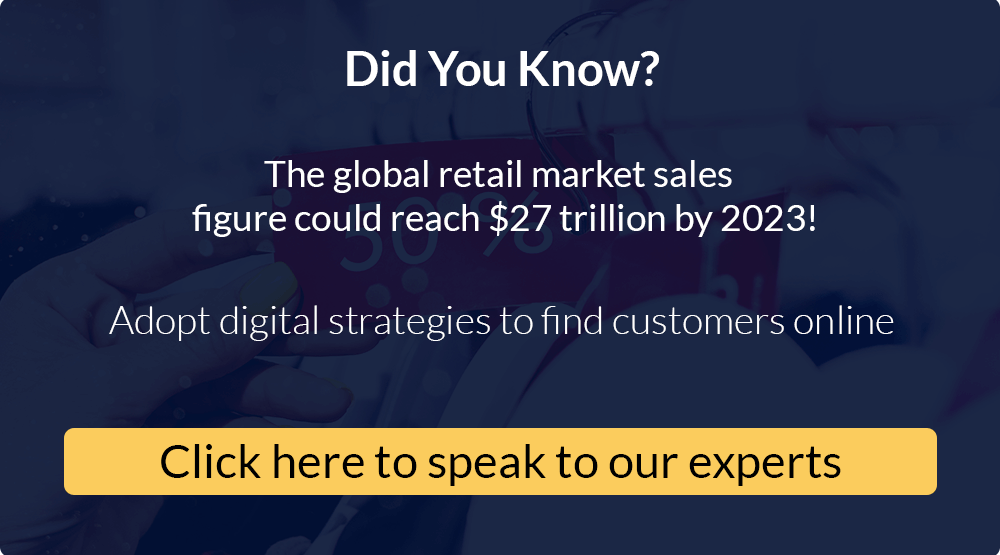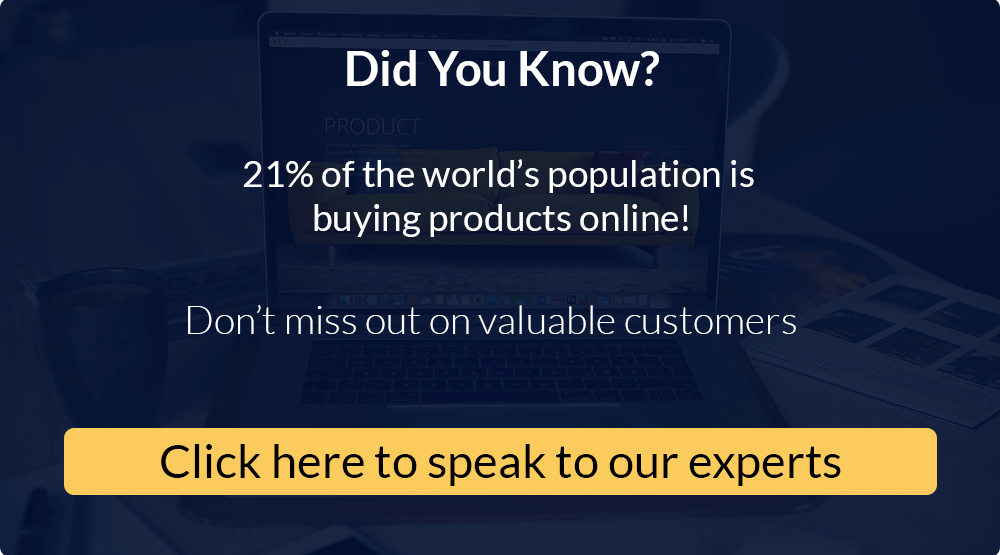We’re all adjusting to a new normal right now.
For retailers, this involves fast altering current methods to match a major shift in buyer behaviour, as well as product demand for some of you long-term retailers.
It entails aiming to make your digital channels and campaigns more effective while physical and mortar stores are temporarily closed.
It also leads to remaining acutely aware of your clients’ requirements, worries, and difficulties while continuing to provide the greatest possible brand experience.
Doesn’t it appear to be a piece of cake?
Numerous clients and industry decision-makers have come to Kilowott in recent weeks seeking advice on what steps they need to take for ensuring their business moves forward.
While this piece isn’t intended to solve every problem you, as a retailer are facing, it should however, help you better understand what to focus on in order to deliver the best possible service to your consumers.
Also, this retailer marketing strategies mini-guide will tell you how to keep your marketing efforts alive, tactful, and effective at these difficult times.
Retailers During Covid-19

Let’s take a look at the present customer landscape—and what it means for your marketing approach—to be able to swing your campaigns and plans properly.
The importance of sensitivity cannot be overstated. Businesses are struggling as a result of the loss of income and the severity of the situation in general.
It’s critical to be aware of and sympathetic to this. Put your consumers’ needs and sensitivities first, especially if you’re not selling life-saving items.
Because many of your clients may regard internet shopping as a nice diversion from reality, don’t fully halt all of your campaigns—but do make adjustments.
It’s critical not to dismiss the situation by sending out messages that were sent out before anything changed. If you have a text that says “Catch Spring Fever” or “Wear this to your next big event!” in your campaigns, pause that creative right away.
Distraction is at an all-time high. Your consumers are dealing with a lot of things right now: uncertainty, pressing needs, adjusting to WFH, preventing cabin fever, checking in on loved ones, and so on.
Consumers are already distracted (95 percent say they’re doing something else when shopping), and now that working parents are doing it while also watching and teaching their children, there will be even more opportunities for disruption.

Your consumers are unlikely to reach the cart, let alone complete their transaction, anytime soon.
- Almost every merchant has an abandonment series, but does it consider cross-channel behavior as well?
- Is it set up for cart abandonment, purchase, browsing by category and product, and brand abandonment?
- Are you able to prioritize the channel to deliver the abandonment message that’s based on the customer’s preferred method of interaction?
- Is it feasible to get it as close to real-time as possible?
When it comes to hyper-distraction, your messages should be sent out when they haven’t visited the site in hours, not days. Right now, best-in-class abandonment retargeting strategies are critical.
Check to see if you’ve covered all of your bases. If not, click on this banner below and let’s get on a quick call to discuss marketing strategies for your retail business.
Site traffic will continue to spike. You can witness an unprecedented level of traffic to your site as a result of social alienation and store closings, making internet buying a necessity (and to your app if you have one).
This is the most critical time to make sure you can accurately identify all of these visitors without having to wait for them to create or log into accounts.
Collecting cross-channel data and email addresses without requiring account login and resolving it all into the appropriate customer profile will allow you to accurately understand each visitor’s behavior and communicate with them in the most effective way possible.
This allows you to send them messages based on their recent and previous interests, as well as their channel preferences, ensuring that new and existing consumers continue to buy with you in the future.

Treat this data differently. Because this isn’t the norm, shopper interest and behaviour should be examined in a new light.
Separate this time period from your holiday or seasonal data in the same way you would your holiday or seasonal data.
Remember that they aren’t necessarily the same behaviours that your customers will perform later in the season, this year, or year after year.
Keep your options open. As we can all see, things are constantly changing.
Right now, don’t overcomplicate your processes or priorities. Your teams must be able to react quickly; make execution simple so that you can pivot as needed.
Retail Marketing Strategies To Drive Sales
- In-store Data To Be Leveraged
This might be a turning point in terms of encouraging your in-store customers to embrace digital channels and all of the omnichannel methods that other retailers have been doing for years.
Utilize in-store customer data to interact with customers who have been impacted by temporary shop closures and begin engaging them online—inform them of all that is still available to them.
Try this – “Your same favorites are available online,” or “check out new arrivals online,” and so on.
Launch specialized campaigns for people who exclusively buy your products in-store, introducing them to online and loyalty benefits, educating them on the benefits of engaging with you online, and cross-selling/recommend things that are similar to or complement their recent in-store purchases.
Replenishment campaigns are also a good approach to remind clients that they can simply repurchase or refill consumable products and perennial favorites that they previously purchased in person. - Website Personalization To Offer Convenience
Right now, your website serves as your storefront and first impression to new visitors.
Make sure it’s as easy to navigate as possible, with the most critical information prominently displayed. Use web pop-ups and geo-targeted modals to display important and timely notifications about store closings, inventory, safety, and new hours, among other things.
When a visitor returns to your site, use website transforms to highlight a high-interest brand or category, making it easy for them to pick up where they left off.
- Product Alerts Must Combat Inventory Issues
Due to inventory concerns, some merchants are pausing or reducing promotions and increasing their back in stock communications.
Product alerts are a simple yet efficient approach to keep clients informed about the necessities they require or the products they care about. Price drops, low inventory, and back in stock detection allow you to swiftly target customers who have interacted with certain products—based on seen, carted, purchased, and wish list activity—and send high-conversion communications to them.

- Product Recommendations To The Rescue
Product suggestions are a quick and easy method to tailor your email blasts right now, as well as add relevancy and convenience to your website. They can also be used to direct online purchases toward products with high inventory levels, while suppressing those that are currently out of stock or low on inventory. - Customer Wish Lists To Be Kept in Check
Some customers may not be able to spend money right now, so they save products to their wish list to purchase later—or they may prefer items to “window shop” as a distraction.
Identify clients who have saved items in specific categories or brands, and notify them when the items are on sale, or include these items in future messages to spark their interest when they’re ready to buy again.
- Consider Boosting Up Mobile Push
Right present, your clients are the most connected via mobile. Push notifications could be a wonderful way to reach out to your younger customers, who are more receptive to this form of marketing.
The key is to be aware of your audience’s choices and multichannel activity, to consider the various communications you’re sending to these customers and dial those down, and to make the message as relevant as feasible.
Post-COVID Retail Marketing Strategies
How brands treat their customers in the months ahead will be a major factor in all of this.
Inventory problems are only getting started, particularly in retail. There will be months of problems with the tailwind.
It will be vital to be able to react quickly, be adaptable, and adjust when inventory and sell-through rates fluctuate on a daily basis.
Now is the moment to seize fresh opportunities and nurture existing consumers. Increasing consumer trust, engagement, and conversion will need putting new and recommended product options in front of them.
Please contact Kilowott if you wish to learn more about any of these tips or tactics, or to discuss your current objectives and next steps.
- Identity Resolution & Visitor Identification is Key
Numerous retailers are witnessing an increase in web sessions as frequent in-store shoppers and both new and returning visitors migrate online. It’s critical to be able to identify as many visitors as possible during this time period in order to help recover any lost in-store sales.
This includes identifying visitors who haven’t yet registered in or made an account, as well as those who have opened an email but haven’t submitted their email address anywhere on your site.
It’s critical to have a solution in place that can reliably identify each visitor, even anonymous ones, and resolve their activity into a single customer profile so you can communicate with them appropriately and customize their experience.
This will also help you understand how their conduct is changing and will continue to change as the crisis progresses.

- Offline Data Should Be Used To Engage In-store Shoppers
As previously stated, the majority of retail marketers are most concerned about COVID-19’s influence on in-store sales. If you haven’t done so before, make use of your in-store customer data in your online marketing campaigns to reach out to customers who have been affected by store closures.
Introduce these customers to the benefits of connecting with you digitally, including the simplicity of your online experience and loyalty rewards.
You may then cross-sell and promote things to your brick and mortar customers via your website, email, app, or even mobile push that are similar to or compliment their in-store purchases by merging offline data with the rest of your cross-channel data.
During this time, retailers can also engage in-store shoppers by reminding them that the consumable products and perennial favorites they purchased in person can be simply repurchased or refilled online.
Personalization is key right now, even for your mass sends.
- Product Alerts To Tackle Inventory Hassles
Numerous merchants are currently dealing with inventory issues of various kinds, ranging from excess inventory to insufficient inventory. Whether you’re attempting to stay up with product demand, push seasonal items, or keep high-margin products top of mind, triggered notifications are a simple but powerful approach to keep customers informed about the things they care about in real time.
Product alerts combine real-time product catalogue changes with automated price reductions, low inventory, and back in stock communications to people who have seen, carted, purchased, or put items to a wish list.
These messages should contain the previously engaged product for convenience, as well as recommendations similar to the item or similar to the behavior of other consumers who purchased that item, to be most effective in promoting conversion.
- Personalize Blasts To Avoid Unsubscribes & Drive Conversion
Retailers are are reverting to hammering their customers with generic messaging and big discounts to boost purchases out of fear and uncertainty.
However, this will only add to the white noise in your clients’ inboxes, potentially leading to a large number of unsubscribes. Personalization is important right now, even for large emails.
To keep inboxes tidy, target deep discounts and specials to people most likely to buy based on historical interest, and use in-email tailored modules to keep blasts very relevant to a customer’s current behavior.
Modules and content blocks allow you to personalize emails based on loyalty status and include exclusive offers, as well as highlight specific inventory, top sellers by category, browsed items, and product recommendations directly in the email without spending any additional time on creative or production.
In conclusion, while the long-term consequences of the COVID 19 virus are unclear, we can only hope that present global efforts to limit the virus and its consequences are effective.
Most of our retail customers use the aforementioned principles in their sales and marketing efforts to boost sales.
And, in our opinion, all smart retailers are considering all situations and properly planning their actions.
Whether this situation lasts weeks or months, the global response to this virus has clearly altered the reality for shops. It’s time to accept this reality and begin adapting.
We can undoubtedly assist you with all of the above techniques; please do not hesitate to contact us.






